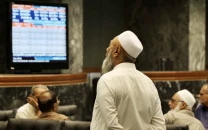Pakistan set to offer subsidised mortgage financing
Loan up to Rs2m to be offered for properties valued up to Rs2.5m

The policy strives to increase the housing finance portfolio of banks/DFIs from current Rs83b to Rs250b by June 2021. PHOTO: FILE
The State Bank of Pakistan (SBP) introduced the ‘Policy for Promotion of Low-Cost Housing Finance’ on Wednesday. It, however, has not yet come into force as the central bank has asked people for feedback for the next two weeks.
“Definition of low-cost housing financing in Pakistan to be adopted as loan amount of up to Rs2 million with the property valuing up to Rs2.5 million. The maximum monthly income of a low cost housing finance borrower should be up to Rs60,000,” the policy document elaborated.
The SBP would provide half the loan at subsidised markup rate of 5%, while the remaining half would be provided by banks and development financial institutions (DFIs) at a fixed rate of 12% or variable rate of 1-year KIBOR plus risk premium up to 4%.
“The SBP will provide refinance up to Rs1 million or 50% of loan amount at a rate of 1% to banks/DFIs and the end borrower rate will be 5%. The remaining 50% of the loan/financing amount shall be provided by the banks/DFIs from their own sources at fixed rate of up to 12% or variable rate of one year KIBOR plus risk premium up to 4%,” the policy paper said.
PMRC gears up as housing shortfall of 10m units bites
“The facility will be provided for both individual house borrowers and housing builders/developers. Similar financing facility will also be provided through the Islamic Financial Institutions,” it said.
The policy strives to increase the housing finance portfolio of banks/DFIs from current Rs83 billion to Rs250 billion by June 2021, along with increasing the number of borrowers to 200,000 from the current 68,000, it said.
It is estimated that annual demand for new homes is approximately 700,000 a year, whereas only about half is met. The central bank would give targets to banks and DFIs for house financing. To help banks meet their set targets, it would soften some rules.
“The general reserve requirements against low cost housing finance portfolio of banks/DFIs to be waived. Bank/DFI’s exposure in low cost housing to be exempted from the exposure limit of 10% for real estate sector,” it said.
Ownership of homes: World Bank approves $145 million to expand mortgage loans
“Microfinance banks to be allowed to increase housing finance amount up to Rs1 million from Rs500,000,” it said.
“One of the major reasons behind a declining trend in housing finance during the period 2008-13, was the inclination of banks towards risk-free financing. Since interest rates were high, it was convenient for banks to make money via investing in government papers. Importantly, it was not just housing finance, but loan supply to nearly all the segments of the economy was affected,” it stated.
Mortgage involves a big sum of loans and people intend to borrow housing loans for at least 5 to 10 years. For the banking industry, this tenure is indeed large. Banks face maturity mismatch as long-term housing loans are currently being funded by short-term deposits which will not be a sustainable situation as the mortgage market grows to its potential, it said.
Published in The Express Tribune, July 19th, 2018.
Like Business on Facebook, follow @TribuneBiz on Twitter to stay informed and join in the conversation.


















COMMENTS
Comments are moderated and generally will be posted if they are on-topic and not abusive.
For more information, please see our Comments FAQ